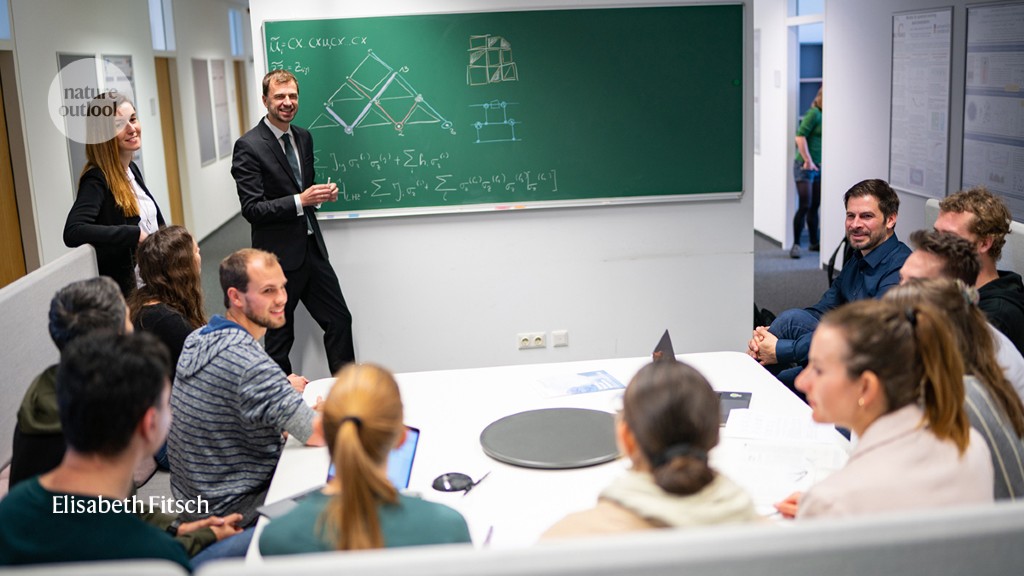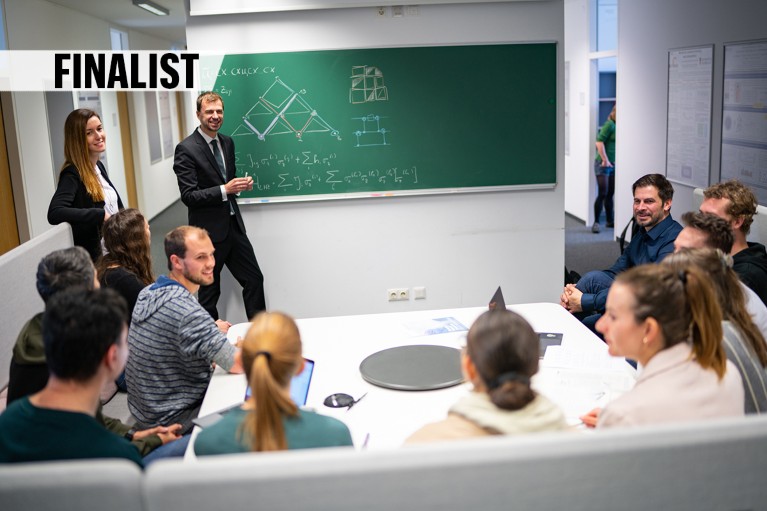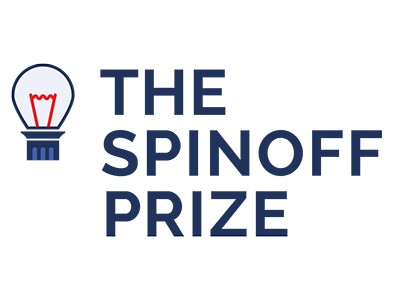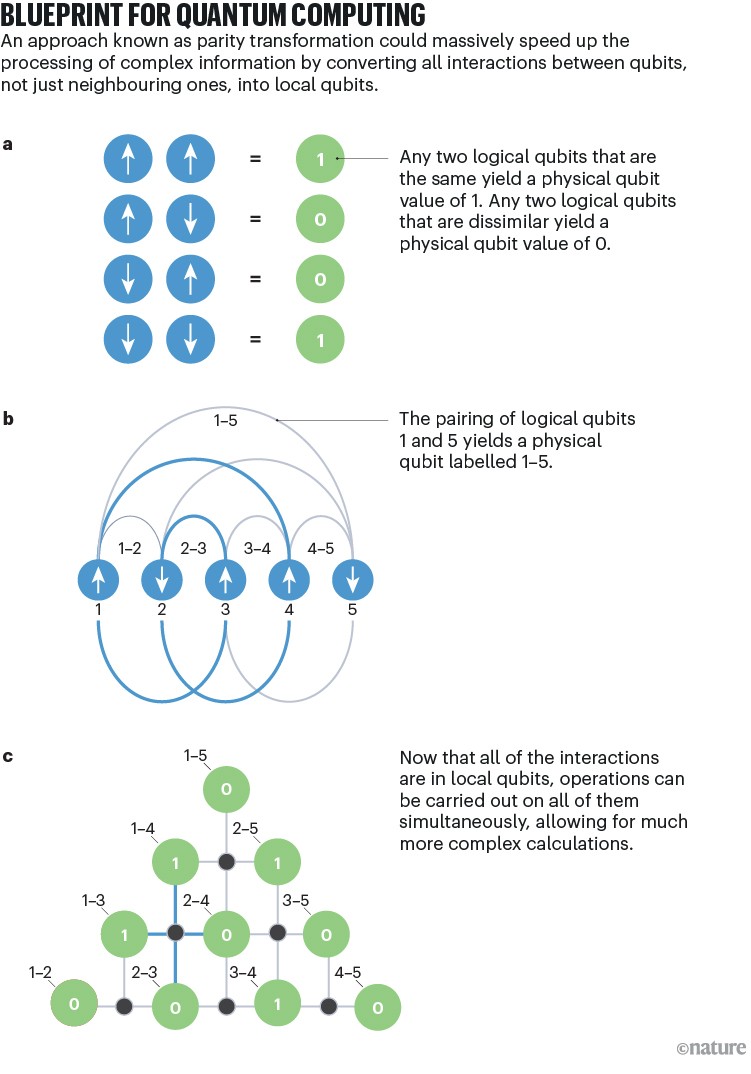ParityQC licenses the intellectual property for it’s quantum-computing architecture to other companies.Credit: Elisabeth Fitsch
Parity Quantum Computing in Innsbruck, Austria, spun off from the University of Innsbruck, Austria, in 2020.
In 2013, Wolfgang Lechner had an idea that he thought was probably too good to be true: a mathematical trick that would change how quantum computers encode information. If it worked, he reasoned, it would be a big deal. Quantum computers can, in theory, perform certain calculations many times faster than conventional digital computers, but they are extremely sensitive to interference and are hard to scale up. Lechner’s brainwave was to provide these computers with an architecture based on the concept of ‘parity’. This could transform them from small laboratory devices into vast, commercial machines capable of solving problems that are currently intractable.
Read more about The Spinoff Prize
Lechner, a physicist at the University of Innsbruck in Austria, discussed the proposal with a colleague, but they managed to persuade themselves that it was a non-starter. Over the next two years he kept turning the idea over in his mind, and says it became an obsession. Eventually, at 3 a.m. in a hotel room, he had a flash of inspiration that could mean his parity-based approach should work after all.
He quickly filed a patent and, just six months later, received an offer for the intellectual property from a large technology company. (Lechner declined to reveal the company or the size of the offer.) This told him that the architecture had commercial potential, and that it might be better to try to reap the rewards directly. So he and his colleagues at the University of Innsbruck decided to reject the offer and set up a spin-off company. ParityQC launched in 2020, and has been named a finalist in The Spinoff Prize 2023.
Three years on from its set-up, the company now employs about 30 people. It has landed sizeable contracts from high-tech manufacturers and from governments — with one deal alone worth several tens of millions of euros. According to Lechner’s co-chief-executive Magdalena Hauser, this early success — combined with grants from the European Union and the governments of Austria and Germany — has meant that the company has avoided having to drum up support from venture capitalists. “We made revenue from the start,” says Hauser.
Busting limits
Quantum computers owe their calculating prowess to certain quantum phenomena of atomic-scale objects. These computers encode data in the form of qubits, which can exist as 0 and 1 at the same time — unlike conventional bits, which exist as only one or the other. Multiple qubits can be entangled to generate all possible values from a string of 0s and 1s simultaneously, enabling parallel processing that is not possible with classical computers.
Part of Nature Outlook: The Spinoff Prize 2023
But qubits are fragile. Their states can be disrupted by the slightest amount of heat or other interference. Their durability varies according to the kind of physical qubit used — ions, neutral atoms, superconducting circuits or quantum dots. They might remain intact for a few seconds if they are perfectly isolated or might disappear after milliseconds if they interact with other qubits during a calculation.
A second major issue for quantum computing is the spatial properties of qubits. The physical processes that link qubits to one another usually occur only over very short distances, such as the overlap of two electron clouds around atomic nuclei or the connection of two superconducting circuits. This means that each qubit typically interacts only with its nearest neighbours, rather than qubits farther away.
ParityQC’s architecture helps quantum computers to deal with both limitations. It does so by changing how the data are encoded in qubits. Rather than representing the values of individual logical qubits — as specified by the program being executed — physical qubits instead record the relationship between pairs of logical qubits in terms of parity. If the qubits in a pair have the same value, then the parity is 1; if the values are different, then the parity is 0 (See ‘Blueprint for quantum computing’).
Credit: Alisdair MacDonald
This change in encoding to a system based on parity transforms all operations involving several qubits, no matter how far apart they are, into the equivalent of local interactions. That eliminates the need for interactions over long distances. And operations can be carried out on all qubits in a computer simultaneously, maximizing the complexity of calculations that can be performed in the brief period during which qubits remain intact.
A commercial mindset
Since dreaming up the parity architecture1, Lechner and his colleagues at ParityQC and the University of Innsbruck have gone on to have dozens of papers published that elaborate the scheme. In one of the most recent2, they have proposed a specific set of operations, or gates, that rely on parity encoding and have confirmed3 that this set would speed up several of the most important quantum algorithms devised so far. These include an algorithm that would allow quantum computers to find the prime factors of large numbers, posing a threat to Internet encryption schemes that rely on the difficulty of such calculations.
To turn this knowledge into revenue, ParityQC licenses its intellectual property to hardware developers so that they can build chips incorporating the architecture. According to Hauser, the company has sold licences to Japanese electronics giant NEC to produce a superconducting quantum chip, and has entered several consortia that were set up in response to the German government investing €2 billion (US$2.2 billion) to fund the development of quantum technologies.
Notably, the company jointly received an €83-million contract awarded by the German Aerospace Center in Cologne to build ion-trap computers. Along with manufacturers eleQtron in Siegen, Germany, and NXP Semiconductors in Eindhoven, the Netherlands, it won the contract to build a 10-qubit demonstration computer and then develop modular and scalable devices. (This type of computer is also being developed by another The Spinoff Prize 2023 finalist, Alpine Quantum Technologies, although Alpine is not part of ParityQC’s collaboration.)
Sue Sundstrom, a start-up coach based in Clevedon, UK, and a judge for The Spinoff Prize 2023, is impressed by what she describes as ParityQC’s analysis of “how previously radically different technologies have been able to get into the market and make money”. She notes a parallel with Arm in Cambridge, UK, a firm which started selling blueprints of chips for reduced-instruction set computers in the 1980s. She also praises the hiring of people with commercial expertise. “For quantum companies that is quite rare,” she says.
Fellow judge Emily MacKay, who is a technology strategist at Siemens Energy and is based in Cambridge, UK, applauds ParityQC’s efforts to make its architecture scalable and applicable to various types of hardware. “Their research approach is future-proofing as far as possible,” she says. (Her comments on ParityQC do not necessarily reflect the views of Siemens Energy.)
But MacKay adds that the company faces an “elephant in the room” — having to decide whether to compete or collaborate with the world’s biggest provider of cloud computing, Amazon Web Services. Lechner says that ParityQC would be “an ideal supplier” to the larger firm, arguing that its parity architecture is well suited to Amazon — which plans to build quantum computers that mitigate errors, partly in hardware and partly through software. “We are not in contact [with Amazon] at the moment but would be happy to [be],” he says.
However, not all specialists are convinced that the parity architecture will achieve its desired results, at least when it comes to solving optimization problems (such as maximizing the return from a financial portfolio or minimizing the distance travelled by goods vehicles). Itay Hen, a numerical physicist at the University of Southern California in Los Angeles, questions whether a quantum computer fitted with the architecture could solve such problems more quickly than would a classical computer — given what he says is the absence of any quantum algorithm that guarantees such an outcome. “Even if we had the perfect quantum computer, we still wouldn’t know whether it is better than a laptop,” he says.
Lechner acknowledges that there is no general proof showing that quantum computers have an advantage over their classical counterparts when it comes to optimization problems. But he is confident that at some point in the next few years — perhaps by around 2030 — the parity architecture will enable a quantum computer to pass this milestone for one or more problems, with classically impossible optimization made possible by new algorithms that emerge. “That is our dream,” Lechner says, “and the target we are working towards.”











More News
Author Correction: Stepwise activation of a metabotropic glutamate receptor – Nature
Changing rainforest to plantations shifts tropical food webs
Streamlined skull helps foxes take a nosedive